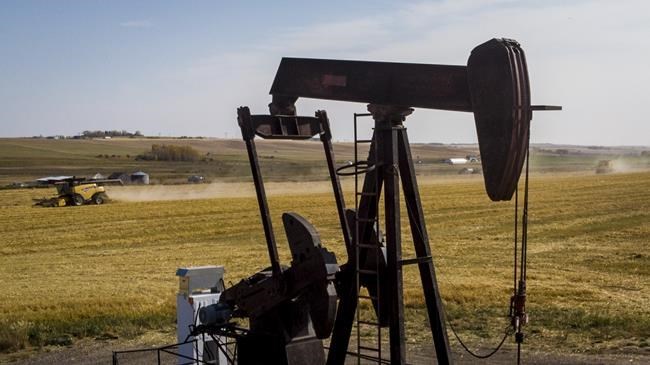CALGARY — With North American natural gas prices soaring to heights not seen in years, Canadians can expect to pay significantly more to heat their homes this winter.
While natural gas prices in Canada and the U.S. have not hit the record levels СŔ¶ĘÓƵ experienced right now in Europe and the U.K. — where supply shortages are raising the spectre of potential outages this winter — they are still higher than they've been in more than six years. Increased economic activity, the loosening of COVID-19 restrictions around the globe and the phaseout of coal are all helping to drive increased demand for the fossil fuel.
At the same time, production hasn't caught up with demand. The uncertainties of the global pandemic have made producers reluctant to make significant capital investments in new drilling programs, and Canadian natural gas storage levels are at five-year lows. North American LNG exports are also running at peak volume to meet global demand, draining inventories.
“This is definitely something that does not bode well for consumers, because if we have a cold winter and we don’t have a lot of gas in storage to rely on, that could be a concern," said Dulles Wang, an analyst and director of Wood Mackenzie's Canadian gas research team, in an interview.
"We do expect to see rising prices for consumers this winter."
On Thursday, the Henry Hub Natural Gas spot price was US$4.95 per one million British thermal units, a 133 per cent increase from the same day one year ago.
Rob Roach, chief economist for financial institution and Alberta Crown corporation ATB Financial, pointed out that's still far from the heyday of the mid-2000s, when natural gas prices spiked as high as $10-$11 at times.
Still, Roach said it's been some time since we've seen a natural gas market like this, and prices will likely get higher still before spring.
"These aren't record highs, but in the North American market prices have been quite low the last few years," he said. "So we're going to feel this, as consumers. It's going to be an expensive winter," he said.
Already, a number of Canadian natural gas distributors have advised their customers of rate hikes. FortisBC Energy Inc., British Columbia's largest natural gas distributor, will increase rates as of Oct. 1, with most customers expected to see their monthly bills increase by approximately $8, or nine per cent.
“We don’t actually mark up the cost of gas. Customers pay what we pay for the cost of the commodity," said FortisBC spokeswoman Diana Sorace, in an interview.
Enbridge Gas, which serves 3.8 million customers in Ontario, heating over 75 per cent of the homes in that province, has also said it will increase rates Oct. 1. In a news release, the company said the typical residential customer will see a bill increase of about $7 to $44 a year depending on where they live.
Manitoba Hydro, which has already increased its rates to reflect rising commodity prices, said the annual bill for a typical residential customer will increase by approximately 8.7 per cent, but larger volume customers could see increases as high as 19 per cent.
Rising commodity prices, while bad news for consumers, are good news for Canada's natural gas sector. Improved balance sheets should result in increased spending, production, and employment into 2022.
“Here in Alberta, it’s quite a boon to a lot of people working in that sector, and the spill-off effects are pretty positive for our economy," Roach said.
But other industries, everything from manufacturing to agriculture, will feel the pinch. Mark Reusser, vice-president for the Ontario Federation of Agriculture, said natural gas is the second-largest expense on his turkey farm, after feed. Each year, he pays to heat three 2,160 square-metre barns.
"I’ve spent enormous amounts of money insulating and making sure they’re as up to date as possible in terms of energy conservation. But you still need heat – this is Canada,” Reusser said. "So this is going to be a significant hit to my bottom line."
This report by The Canadian Press was first published September 23, 2021.
Companies in this story: (TSX:FTS, TSX:ENB)
Amanda Stephenson, The Canadian Press

